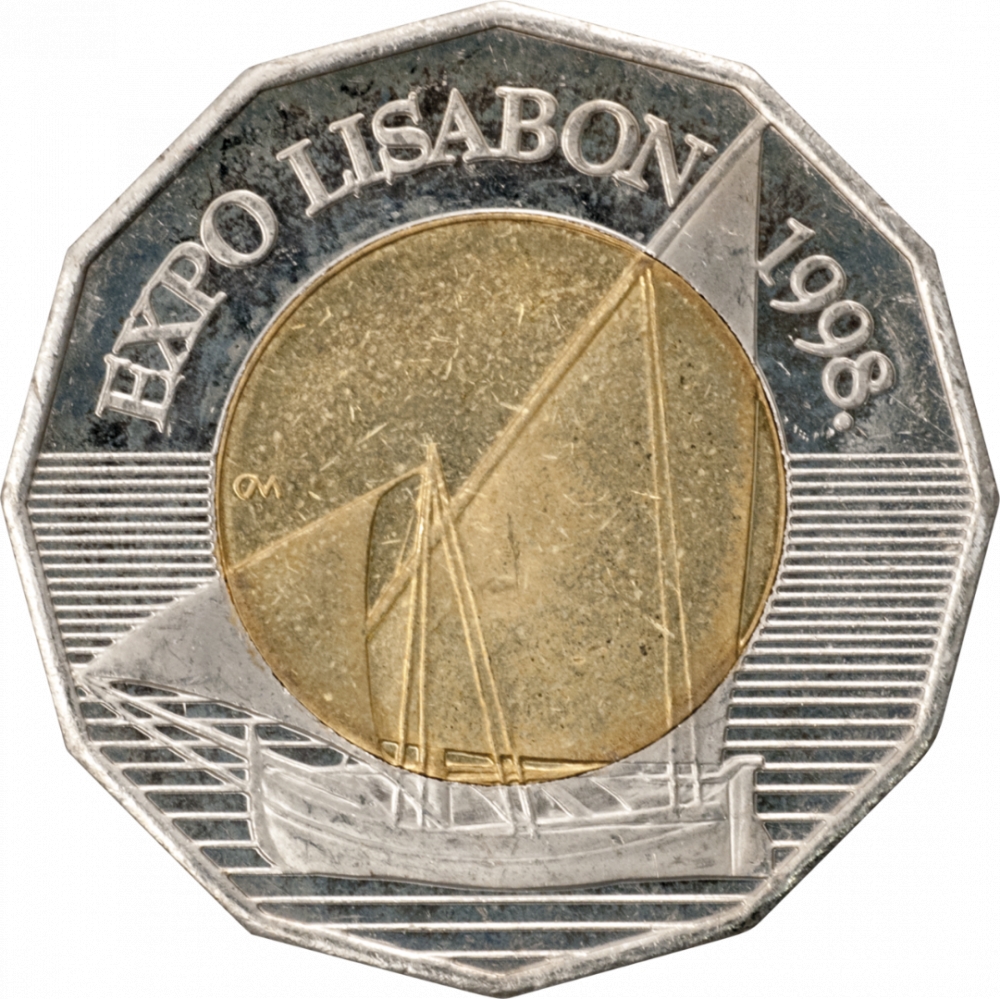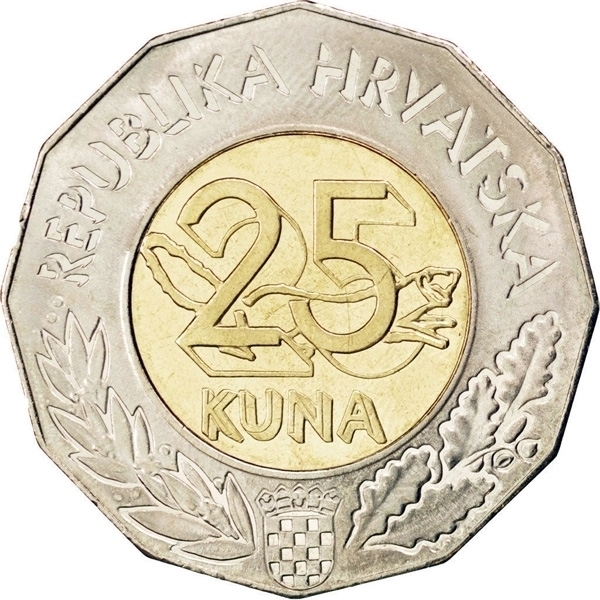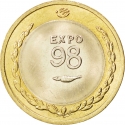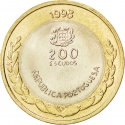You are about to finish your registration. Please check your mailbox (including spam folder). There should be a letter with a confirmation link. Check setting to make sure that your e-mail address is correct.
Send letter againDescription
The coin commemorates Lisbon Expo 1998 with Croatia as the first-time participant.
Expo '98 (1998 Lisbon World Exposition) was an official specialised World's Fair held in Lisbon, Portugal from Friday, 22 May to Wednesday, 30 September 1998. The theme of the fair was "The Oceans, a Heritage for the Future", chosen in part to commemorate 500 years of Portuguese discoveries. The Expo received around 11 million visitors in 132 days, while 143 countries and many organizations were represented.
Release date: 26 June 1998
Designer: Damir Mataušić
Obverse

|
The central part carries an image of a model of an ancient Croatian ship, "falkuša", dating from the 11th and 12th century. There are many lines in a ring that symbolise sea surface. Within the ring, in its lower semi-circle, there is a succession of horizontal lines, symbolizing the sea surface. The inscription "EXPO-LISABON 1998" is placed in the upper semi-circle of the ring. On the left side of a brass centre, a signature of an engraver (DM) is written. EXPO LISABON 1998. |
|---|---|
Reverse

|
The central part of the coin's core carries the designation of the nominal value 25. Within the numeral outlines, the figure of a pine marten running towards the right is shown; the marten's body is integrated with the numeral denoting the nominal value. In the bottom, central part of the coin's ring the coat of arms of the Republic of Croatia is impressed. A blooming laurel branch is placed in a semicircle on the left to the coat of arms, while a common oak branch with fruits is on the right. The top part of the ring carries the semicircular inscription The Republic of Croatia. REPUBLIKA HRVATSKA |
| Edge |
25 Kuna
KM# 63 Schön# 73
Characteristics
| Type | Commemorative Issue (Circulating) |
| Material | Bi-Metallic |
| Ring | Cupronickel |
| Center | Copper Aluminum Nickel |
| Weight | 12.75 g |
| Diameter | 32 mm |
| Thickness | 2.2 mm |
| Shape |
|
| Sides | 12 |
| Alignment | Medal |
| Mint |
Croatian Monetary Institute (HNZ)
|



